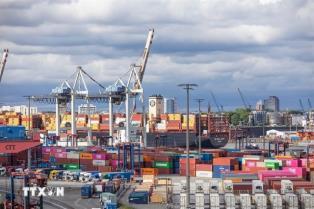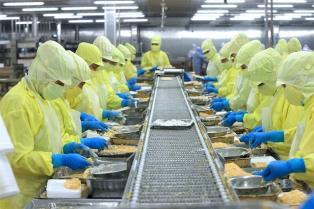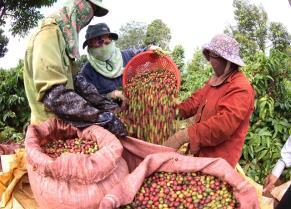Local exporters and processing businesses should reform production and diversify export markets to avoid risks from pandemics or military conflicts that may occur in the future, while boosting integration in the global distribution system with a higher percentage of high-tech and sustainable elements.
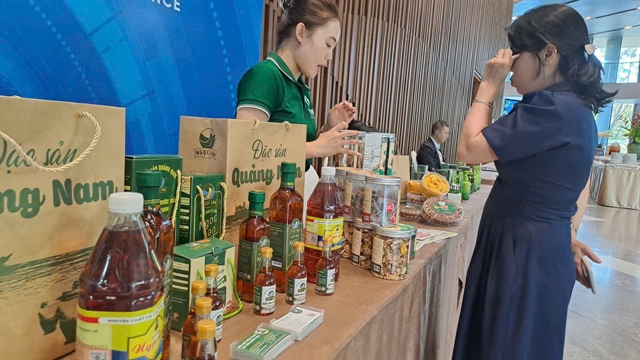
ĐÀ NẴNG – Local exporters and processing businesses should reform production and diversify export markets to avoid risks from pandemics or military conflicts that may occur in the future, while boosting integration in the global distribution system with a higher percentage of high-tech and sustainable elements.
Lê Thị Thanh Minh, an official from the Ministry of Trade and Industry, made the statement to local businesses and producers at the Business Matching and Export Promotion Conference in Đà Nẵng.
Minh noted that the country’s exports must completely shift from low-value raw material to high-quality and value-added processed products, while expanding export markets to new emerging economies, including African countries.
According to Minh, Việt Nam’s export industries are very vulnerable to market shocks, including regional or global economic or military crises, because export growth is mostly dependent on major markets including the US, China and the EU.
“Despite earning US$597.9 billion in export-import turnover in the first eight months of the year, Việt Nam’s exports could fluctuate depending on changes in technical regulations or higher supervision requirements on product quality control in key import markets,” Minh said.
“This means that local exporters and processing enterprises have to step up their action plans by improving high-quality products with sustainable and controlled conditions, while reaching global standards and qualifications for international export possibilities,” she added.
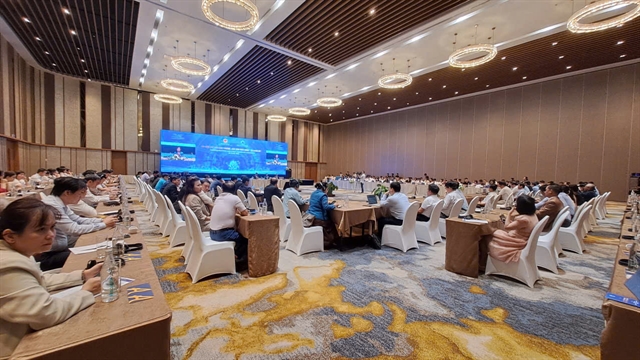
Việt Nam’s exports rely on the comparative advantages of products such as garments, cashews, leather, mobile phones or electronics, but production is stagnant with low-value raw materials, according to Minh.
“Our products should have strong investment, with high-tech or greener components, rather than easy processing. For example, raw cashews can be processed into healthy milk or higher quality products, while chips and software designs should be included in electronic components, rather than only for locally assembled products,” she said.
“Việt Nam has a series of strong products, including coffee, rice and solar cells, which are needed to be promoted with strong national brands. Local products could be fully listed for global distribution in 2030.”
Of the country's nearly $306 billion in export turnover, the US market accounted for $99 billion, a 32 per cent share of total export revenue, while China took $35 billion and the EU market had a trade surplus of $25.6 billion, the ministry reported.
Đỗ Ngọc Hưng, a trade counsellor at the Việt Nam Trade Office in the US, said that Vietnamese products currently have easy access into the US consumer market with a 20 per cent tax.
However, Hưng said Việt Nam’s export businesses have been facing increasing trade investigation cases every month from US agencies.
Vietnamese products are also challenged by technical regulations on seafood, furniture, semiconductors, copper and trucks, he said.
Businesses in Việt Nam are required to build transparency data for industrial manufacturing, and should make use of QR codes, blockchain, green elements and labour protection mechanisms for sustainable growth in the US market, Hưng said.
Việt Nam Trade Office in China official Nông Đức Lai warned that Vietnamese exports will face competition from 20 other countries with 24 alternative products, including durian, coffee, pepper and seafood.
He said that China will strengthen its regular checks on food safety and official registration requirements for eligible exporters.
“China, with 400 million middle-income consumers, will require exporters to improve food safety and provide certificates on original goods, international quality standards or nutrition content. This means that Vietnamese businesses have to transform production with a focus on quality and high value, rather than quantity, as usual,” he said.
“Chinese consumers will favour ready-cooked foods, but they look for organic production and sustainable packaging as well.”
Local exporters and producers have been encouraged to form cooperative groups to achieve standards needed to be granted codes, rather than making individual or single business moves.
The Ministry of Industry and Trade will continue to support local businesses in seeking new export markets through promotion, workforce training and digital transformation in the years to come. VNS

